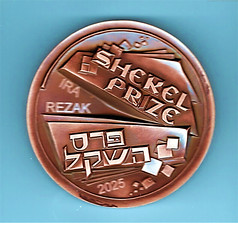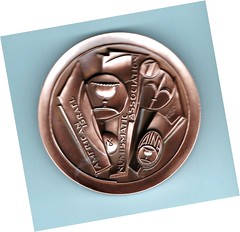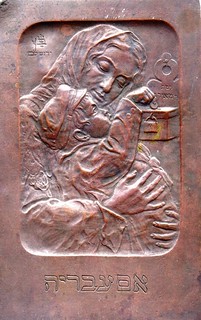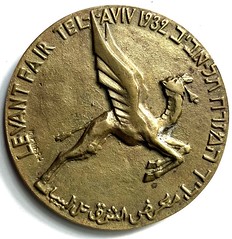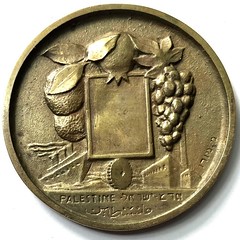
PREV ARTICLE
NEXT ARTICLE
FULL ISSUE
PREV FULL ISSUE
2025 SHEKEL PRIZE ANNOUNCEDThe Shekel Prize is awarded annually to the best book published on the topic of ancient Judaean coins, coins of the Holy Land or Judaic numismatics. Here's the announcement of the 2025 winner. -Editor
Ira Rezak's prize-winning book The phrase "Jewry reflected, refracted, and recorded in medals" is a compelling description of the way Jewish history, culture, and experience are represented and preserved through the art and craft of medals
Reflected: Medals, tokens and Badges have been used for centuries by Jewish artists to reflect the actuality of Jewish individual and communal existence. Refracted: Medals are often used to honor or reward individuals who have excelled in some activity that brings credit to the Jewish people. Over their long history Jews have had to adapt themselves individually and communally as they engage with society in changing circumstances which has inevitably necessitated change, refraction of direction and method. After nearly two millennia the Jewish re-settlement of the Holy Land required new adaptations to older ways of life. The 1932 prize medal designed by Moses Murro for the Levant Fair in Tel Aviv presented such change by inventing a new iconographic logo, the flying camel, a modern version of an ancient Jewish mode of passage. 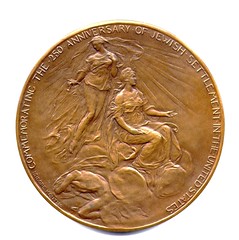
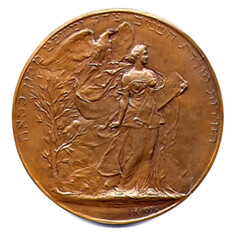
Medal celebrating the 250th Anniversary of Jewish Settlement in America. Designed by Isidor Konti. Bronze, 76mm. Issued in 1905. Recorded: Commemoration, establishing a material record of past events and present achievements is perhaps the most common function of medallic art. Jewry, the Jewish people, have had much in their past to reflect upon, and fortunately also attainments worthy of celebration. The medal by Isidore Konti celebrating the 250th anniversary of the arrival of Jews in America records this event in a classical Beaux-Arts style. Liberty and Justice triumph over Intolerance on one side, while on the other a figure of History has inscribed on a tablet the dates 1655 and 1905 under the protection of an American eagle. The website of the Center for Jewish History indicates the following:
The Shekel Prize has been awarded annually since 2017 to the author of the best book published on the subject of Ancient Judaean, Holy Land, Israel, or Jewish Numismatics. Ira Rezak is a retired physician and educator who has studied and collected Judaica for many years. An Emeritus Professor at Stony Brook University, he serves as president of the Harry G. Friedman Society and is a board member of the American Israel Numismatic Association.
Wayne Homren, Editor The Numismatic Bibliomania Society is a non-profit organization promoting numismatic literature. See our web site at coinbooks.org. To submit items for publication in The E-Sylum, write to the Editor at this address: whomren@gmail.com To subscribe go to: Subscribe All Rights Reserved. NBS Home Page Contact the NBS webmaster 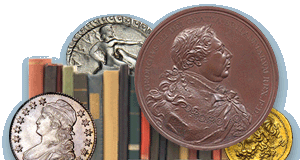
|
